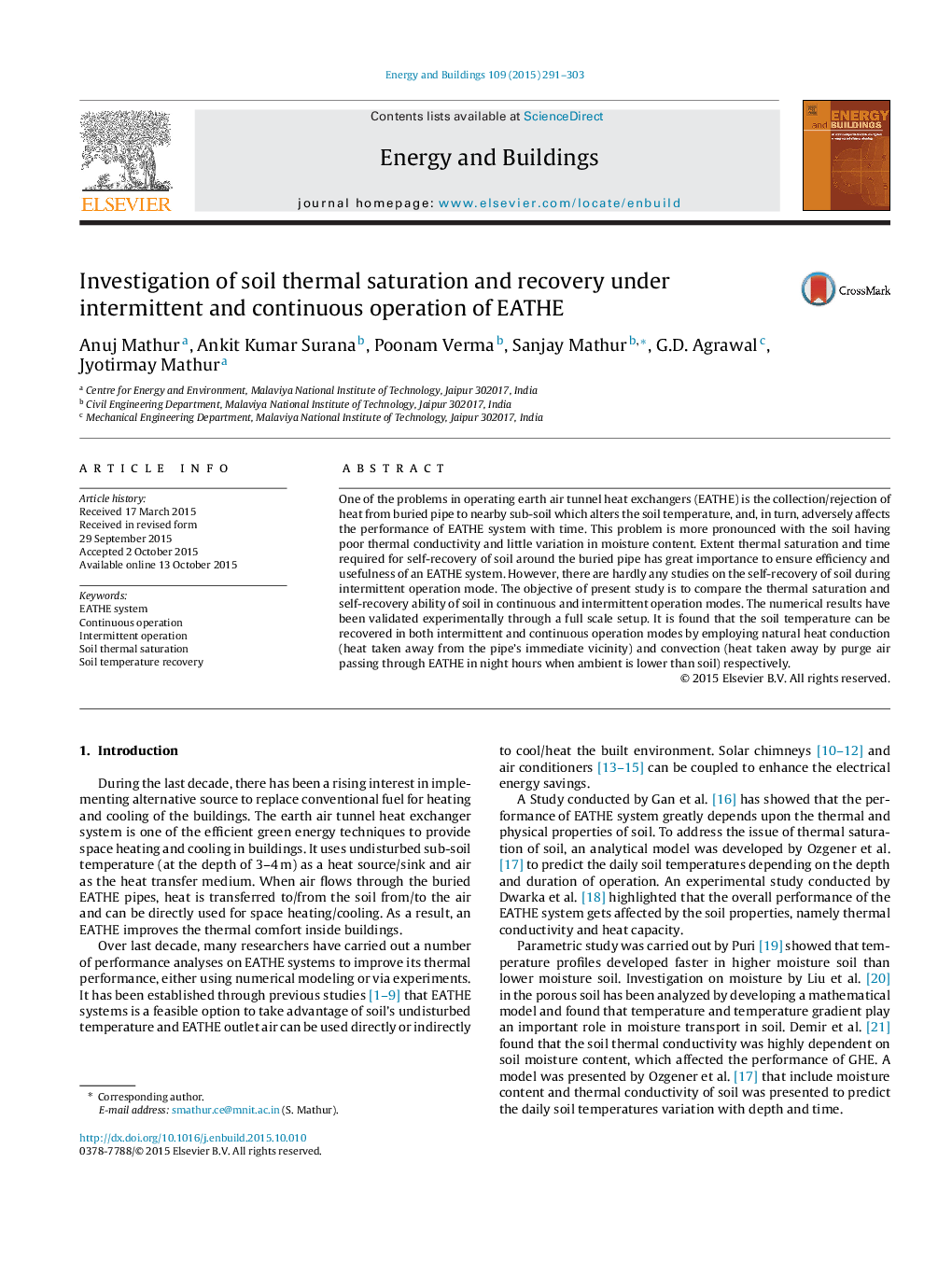| Article ID | Journal | Published Year | Pages | File Type |
|---|---|---|---|---|
| 6731019 | Energy and Buildings | 2015 | 13 Pages |
Abstract
One of the problems in operating earth air tunnel heat exchangers (EATHE) is the collection/rejection of heat from buried pipe to nearby sub-soil which alters the soil temperature, and, in turn, adversely affects the performance of EATHE system with time. This problem is more pronounced with the soil having poor thermal conductivity and little variation in moisture content. Extent thermal saturation and time required for self-recovery of soil around the buried pipe has great importance to ensure efficiency and usefulness of an EATHE system. However, there are hardly any studies on the self-recovery of soil during intermittent operation mode. The objective of present study is to compare the thermal saturation and self-recovery ability of soil in continuous and intermittent operation modes. The numerical results have been validated experimentally through a full scale setup. It is found that the soil temperature can be recovered in both intermittent and continuous operation modes by employing natural heat conduction (heat taken away from the pipe's immediate vicinity) and convection (heat taken away by purge air passing through EATHE in night hours when ambient is lower than soil) respectively.
Related Topics
Physical Sciences and Engineering
Energy
Renewable Energy, Sustainability and the Environment
Authors
Anuj Mathur, Ankit Kumar Surana, Poonam Verma, Sanjay Mathur, G.D. Agrawal, Jyotirmay Mathur,
